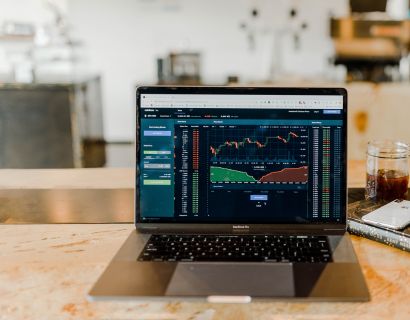Everything for  Business
Business
 Business
Business
 Business
Business
Another rebound of the S&P 500 is being suppressed as quickly as it surfaced. However, an optimistic spirit that continues to return bulls to stocks hangs around. While the punishment for optimism was swift in 2022, a decade of bull mark

Another rebound of the S&P 500 is being suppressed as quickly as it surfaced. However, an optimistic spirit that continues to return bulls to stocks hangs around.
While the punishment for optimism was swift in 2022, a decade of bull marketing proved nearly impossible to win. Retail investors mostly refuse to part with meme stocks, bullish invalids sit with predictions that many stocks will double, and valuations are high enough to imply the view that next year's earnings hit will be trivial.
Optimism explains why the 2022 bear market has been delayed rather than culminating in a sudden crash, such as in 2020. For opponents who say the floor won't form until every buyer is exhausted, the news suggests the stock revaluation should go further.
"It's human nature to want to buy sauce, to want to find the bottom. And I think the behavior is still pretty obvious among investors," said Steve Sosnick, chief strategist at Interactive Brokers. "This means that what we've seen is something we're likely to continue to see: markets that go lower, punctuated by periodic bouts of enthusiasm."
Stocks fell in five days, and the S&P 500 wiped out part of its rally the previous week. Down more than 2%, the index just experienced its 11th drop in 13 weeks.
Unlike the previous two bear markets, where rising losses fueled investors' exodus, cash continued to pour out during this time. In the first five months of the year, equity-focused mutual funds and exchange-traded funds raised $70 billion in new money, according to data compiled by the Investment Company Institute.
Such a purchase makes sense for Todd Morgan, chairman of Bel Air Investment Advisors.
"People have to hope because it's always worth keeping quality companies in the long run. The market always comes back," he said. "The news for us is not the same as it was in 2020, when we had Covid and there was no vaccine," he added. "This is not 2008, when the whole system fell apart. So I think people feel more at ease."
While hedge funds and computer traders have reduced their shares to multi-year lows, retail investors who have flocked to stocks since the 2020 crash and made solid profits probably haven't finished selling, according to a study by Morgan Stanley's trading department.
The firm's analysts, including Christopher Metley, track public exchange data to measure retail flows and estimate that buying shares from small traders has surpassed pre-pandemic rates by $200 billion since 2020. So far, they have spun only 10% of what analysts call "excess" demand.
In December 2018, when the market bottomed out after the S&P 500 fell by the same amount as last month, retailers unloaded between 30% and 35% of what they had bought in the previous two years, the Morgan Stanley model shows.
"Retail investors still have the ability to sell shares," Metley wrote in a note. "While positioning is undoubtedly easy for some groups of investors, the most likely way forward in the next few months will be lower for U.S. stocks."
Despite the massive valuation correction, the stock is still far from obvious deals. At a low in June, the S&P 500 traded at a profit of 18 times more, exceeding estimates seen in all previous 11 bear cycles since the 1950s. In other words, if stocks bounce out of here, this bear market bottom will be the most expensive on record.
At the current level, the S&P 500's price-to-earnings ratio of 19 is higher than its long-term average both in bear markets and beyond. To name the bottom here requires a firm belief that stocks either deserve a higher premium than usual, or that profits will continue to rise in stretched valuations. It's a controversial scenario now that the Federal Reserve is engaged in the most aggressive tightening of monetary policy in decades, a position that creates pressure on both stocks and the economy.
"I would very much doubt that this was the bottom because of the earnings estimates, which are still too high, and the P/E ratio, which is still too high," said Leo Grochowski, chief investment officer of BNY Mellon Wealth Management. "In the short term, profits should decline more, and that will scare investors again."
Still, whether it's bottom-up analysts keeping an eye on individual companies or downside strategists deriving market forecasts from macroeconomic trends, the optimism is alarmingly evident.
Of the 23 strategists tracked by Bloomberg, all see the S&P 500 ending the year higher than it does now. The sale left about 30 companies in the Russell 1,000 with rally forecasts of 100% or more, including Novavax Inc., the developer of the coronavirus vaccine, and Carvana Co., an online used car dealer.
Amid a host of obstacles, from rate hikes to war in Europe, analysts' earnings forecasts remain optimistic. At $246 per share, the S&P 500 is expected to see growth of more than 8% next year.
"The market is ahead of analysts on the sales side" in anticipation of a slowdown, said Brad Neuman, director of market strategy at Alger. "It is solved in one of two ways. Either the profits are generally correct, and stock prices will change and return to profits. Or profits will follow prices down to some extent. I think that's the last thing."
 As the U.S. IPO market languishes, listings head east to booming China.
As the U.S. IPO market languishes, listings head east to booming China.
 Pound sterling rises as traders ponder the agenda of new British Prime Minister Truss
Pound sterling rises as traders ponder the agenda of new British Prime Minister Truss
 Central Banks in Jackson Hole Take Tougher Mission Ahead
Central Banks in Jackson Hole Take Tougher Mission Ahead
 Bitcoin continues to retreat as the 200-week average focuses again
Bitcoin continues to retreat as the 200-week average focuses again
 Private investors buy up retail real estate as major players remain cautious
Private investors buy up retail real estate as major players remain cautious
This site uses cookies and other visitor identifiers for the convenience of each user. If you stay on our site after reading this message, it means that you have no objection to the use of these technologies. Learn more
